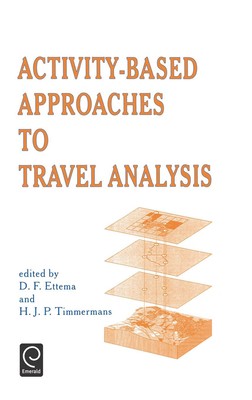
- Išsiųsime per 12–18 d.d.
- Leidėjas: Pergamon
- ISBN-10: 0080425844
- ISBN-13: 9780080425849
- Formatas: 15.6 x 23.4 x 2.4 cm, kieti viršeliai
- Kalba: Anglų
- Extra -15 % nuolaida šiai knygai su kodu: ENG15
Activity-Based Approaches to Travel Analysis (el. knyga) (skaityta knyga) | knygos.lt
Atsiliepimai
Aprašymas
Societal trends have made the need for better travel demand forecasts more urgent, at the same time as making people's travel and activity patterns far more complex. Traditional traffic flow models are no longer sophisticated enough to cope. Activity analysis is seen by many as the solution. It has had a short but intense history in geography, urban planning, time use research and, more recently, transportation. Pioneering activity-based models have now been developed to the point where, some argue, it is time to abandon the traditional four-step model for transportation demand forecasting and to adopt activity-based approaches instead. Others claim that the complexity of such approaches, and their tremendous data requirements, prevent them from having a significant impact. This book explores these claims and the issues associated with them. An introductory section outlines the debate. The body of the work is organised in four sections: modelling developments; theories and empirical analyses; data needs and data representation; and policy analysis. The final section discusses future research directions.
EXTRA 15 % nuolaida su kodu: ENG15
Akcija baigiasi už 5d.20:04:14
Nuolaidos kodas galioja perkant nuo 10 €. Nuolaidos nesumuojamos.

- Leidėjas: Pergamon
- ISBN-10: 0080425844
- ISBN-13: 9780080425849
- Formatas: 15.6 x 23.4 x 2.4 cm, kieti viršeliai
- Kalba: Anglų Anglų
Societal trends have made the need for better travel demand forecasts more urgent, at the same time as making people's travel and activity patterns far more complex. Traditional traffic flow models are no longer sophisticated enough to cope. Activity analysis is seen by many as the solution. It has had a short but intense history in geography, urban planning, time use research and, more recently, transportation. Pioneering activity-based models have now been developed to the point where, some argue, it is time to abandon the traditional four-step model for transportation demand forecasting and to adopt activity-based approaches instead. Others claim that the complexity of such approaches, and their tremendous data requirements, prevent them from having a significant impact. This book explores these claims and the issues associated with them. An introductory section outlines the debate. The body of the work is organised in four sections: modelling developments; theories and empirical analyses; data needs and data representation; and policy analysis. The final section discusses future research directions.


Atsiliepimai